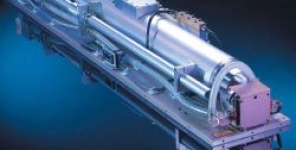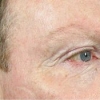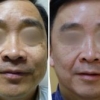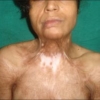Sindrome di Racouchot Favre: un nuovo approccio terapeutico in due fasi che utilizza il laser ad anidride carbonica
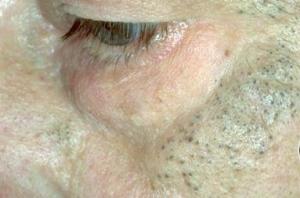 La sindrome di Racouchot Favre (FRS) è sia deturpante che difficile da trattare. Le terapie mediche e chirurgiche disponibili finora hanno un'efficacia variabile. Inoltre, la maggior parte dei trattamenti non raggiunge la completa risoluzione e non mantiene la risposta terapeutica.
La sindrome di Racouchot Favre (FRS) è sia deturpante che difficile da trattare. Le terapie mediche e chirurgiche disponibili finora hanno un'efficacia variabile. Inoltre, la maggior parte dei trattamenti non raggiunge la completa risoluzione e non mantiene la risposta terapeutica.
Obiettivi
Valutare la risposta ad un nuovo trattamento in due fasi che utilizza il laser ad anidride carbonica nei pazienti con FRS.
Metodi
Sette pazienti con FRS sono stati trattati con laser al biossido di carbonio (CO2) nella modalità resurfacing con espressione manuale dei comedoni in anestesia locale infiltrativa. La procedura è stata effettuata in una sessione di trattamento di 30 minuti e la ferita è stata lasciata guarire per seconda intenzione. Sulle zone trattate è stato applicato un antibiotico topico e poi queste sono state coperte con una medicazione non aderente. Lo stesso chirurgo che aveva eseguito il laser ha poi valutato i pazienti dopo tre mesi dall'intervento; inoltre, è stata effettuata una valutazione visiva della risposta clinica confrontando le fotografie prima del trattamento. Per ciascun paziente è stato registrato il grado di soddisfazione.
Risultati
Tutti i pazienti hanno raggiunto la completa risoluzione dell'FRS. Il follow-up per la nostra coorte è durato dagli 8 mesi ai 3 anni. Due pazienti hanno richiesto un ulteriore trattamento entro un periodo di 2 -3 anni dal trattamento iniziale: in questi pazienti è stata osservata una recidiva della malattia oltre 1 anno dal trattamento primario; entrambi erano fumatori e hanno ripetuto il trattamento con gli stessi parametri laser, mantenendo i risultati riproducibili. Il periodo massimo di follow-up senza malattia è stato di 3 anni dal trattamento primario. I chirurghi laser e i pazienti hanno riportato elevati livelli di beneficio e soddisfazione nei confronti dei risultati.
Conclusioni
Questo trattamento in due fasi di FRS è risultato efficace e durevole con un eccellente risultato estetico. Il follow-up a lungo termine oltre i 3 anni è stato previsto per determinare se si verificava recidiva con questa tecnica.
Storia della pubblicazione:
Titolo: Favre Racouchot Syndrome; A novel two- step treatment approach using the carbon dioxide laser
Rivista: British Journal of Dermatology. doi: 10.1111/bjd.12742
Autori: S. Rai, V. Madan, P.J. August, J.E. Ferguson
Affiliazioni:The Laser Division, Salford Royal NHS Foundation Trust, Manchester, United Kingdom
Abstract:
Background Favre Racouchot Syndrome (FRS) is both disfiguring and difficult to treat. Available medical and surgical therapies are of variable efficacy. Most treatments do not achieve complete resolution and do not show maintenance of therapeutic response. Objectives To assess the response to a novel two step treatment using the carbon dioxide laser in patients with FRS. Methods Seven patients with FRS were treated with the carbon dioxide (CO2) laser in resurfacing mode with manual expression of comedones under infiltrative local anaesthesia. The procedure was completed in one treatment session lasting 30 minutes and the wound was left to heal by secondary intention. A topical antibiotic was applied to treated areas and covered with a non-adherent dressing. All patients were assessed 3 months post operatively by the operating laser surgeon and a visual assessment of clinical response to treatment in comparison to pre treatment photographs was made. Patient satisfaction was also recorded. Results All patients achieved complete resolution of FRS. The follow up duration for our cohort ranged from 8 months to 3 years. Two patients required further treatment within a 2 -3 year period from initial treatment. Disease relapse was noted over 1 year post primary treatment, both these cases were smokers and repeat treatment with similar laser parameters maintained reproducible results. Our longest disease free follow up duration was 3 years post-primary treatment. Laser surgeons and patients reported high levels of therapeutic benefit and satisfaction with the results. Conclusions This two-step treatment of FRS (CO2) laser resurfacing and manual pressure induced expression of comedones) is an effective and durable treatment for FRS with an excellent cosmetic outcome. Long term follow up beyond 3 years is planned to determine if later recurrence occurs with this technique.
